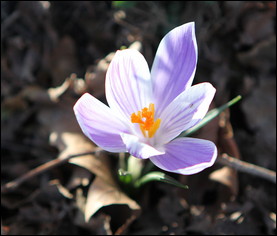 The early warmth has flowers blooming ahead of schedule. |
Spring has come… again…though not exactly on schedule. Everything is early. The cherry blossoms in Washington D.C., a gift from the Emperor of Japan, were expected to coordinate with a rare exhibit of famous Japanese painting, but alas, the cherries had their own timetable. The exhibit doesn’t open until April 1, 2012, but the flowers are a sky blanket of white glory right now.
Records from the National Arboretum between 1930 and 1965, show April to be the cherry blossom norm. However 1938, 1945 and 1946 were early too, March 20 to 23. But that’s still not as early as this year, 2012. (One wonders if the energy use and bombs during the Second World War caused a kind of global warming then too.)
This spring’s flowers are most welcome, but we perceive the garden very differently these days. Today, we are rushed. Overwhelmed with entertainment possibilities, personal communications and information overload.
Before, there was little TV, no electronic devices and no instant communication. Life was slower, quieter, and so one found hobbies that were time consuming but satisfying.
Gardens were a pleasure of color, scent and the caress of the breeze. Also a challenge of ongoing care to make the little plants bloom when and where one wanted. Afterwards there was a cool drink on a hammock or porch, to enjoy the sunset and maybe a pleasant conversation.
Nostalgia is nice, but not really productive because today people want a low-care or no-care garden. However, most folks don’t understand the ecology of landscapes and the level of gardening care that each kind of design requires.
Today’s most provocative garden designs are interesting challenges. There are hanging gardens on apartment terrace walls (complicated little flowerpots that have to be watered daily or even more). Or maybe orchids wrapped around pillars (also little pots). And roof gardens (flat planters that get rained on). Fortunately, there are also inexpensive flowers in full bloom at the supermarket.
Another fashionable style is so-called "Natural.” As in, Mother Nature should take care of it. This is also wishful thinking because these gardens also require maintenance. They are just different plants with a different feel. Think about the big clumps of grasses that are requisite in any new landscape design today.
 A tree puts on a colorful spring display. |
Also there is the "New American Landscape," in which the ground is often contoured into interesting lumps and bumps, and then planted with grass or massed shrubs. The familiar comforting design of Olmsted’s natural landscapes or that of classic geometric garden beds is gone. Sadly I think. But there is lots of "hardscape," which means stone walls and paving (because it’s profitable and doesn’t require maintenance).
People who want a low-care or no-care garden can develop one. Like a painting, it can have any design. Or it can be like a favorite photo. Or a remembered sliver of the past. Or ecological perfection. Then ignore the weeds. It should be edible, have flowers, butterflies, flowering cherry trees. Replace what dies with something else. Don’t brood over it.
Most important, today’s gardens should have peace and quiet. A place to escape the electronic overload and savor the caress of the gentle breeze.
Ruth S. Foster is a landscape consultant and arborist. More gardening information can be found on her website, www.mothersgarden.net.
Credit: www.mothersgarden.net




























